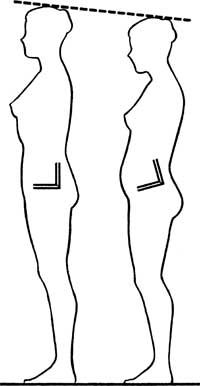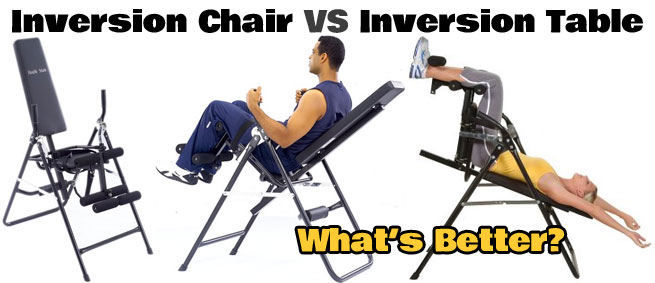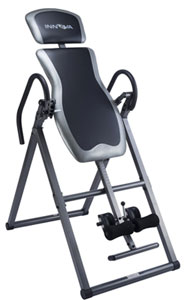Many people buy inversion tables to help them relieve back pain. In the video below, you’ll see exactly how inverting works quickly compared to other treatments, plus other inversion table benefits.
However, did you know that inversion therapy offers multiple other benefits? Here are a few, as the video above explains:
Benefits of an Inversion Table:
- Reduce pressure on joints can boost blood circulation.
- Hanging upside down can relieve stress.
- Inverted stretching can help with flexibility.
- Blood flow to the brain can raise mental alertness.
- Get better posture by inverting regularly.
- Inversion can help realign the spine after workouts.
- Reducing pressure on discs can relieve back pain.
How Does Inversion Help the Back and Spine?

Over a lifespan, gravity essentially causes the fluid and discs in our spines to compress. This can result in what’s known as a herniated disc or slipped disc.
These problems can cause chronic back pain when enough pressure pushes on adjacent nerves. Therefore, inversion therapy can benefit the spine by increasing the space between discs, and many times it alleviates the accompanying pain.
Dr John Collins of Springbrook Chiropractic has an inversion table in his office. He has also recommended to many of his patients that they use these devices at home, “to counter or mitigate the many detrimental, chronic, bio-mechanical stressors of modern living”. source
An alternative is to use what is known as an inversion chair. Rather than extending to full length, the person remains in a seated position while inverted.
The chair reclines to 70% rather than 100%. This puts less pressure on the leg joints, therefore providing more back support and preventing arching.
Many people experiencing lower back pain (LBP) have reported noticeable pain relief after hanging upside down even after just a few minutes. However, each person is different, as well as each case, cause and recommended treatment.
Possible Inversion Table Risks: The Pros and Cons
Even though inversion therapy provides multiple advantages, it has potential side effects, according to Edward R Laskowski, M.D.. He states that when inverted for a few minutes, a person’s blood pressure increases, the heart rate slows and pressure on the eyeballs jump.
Therefore, people with high blood pressure, heart disease or glaucoma should not use this form of therapy. He also says that studies have shown relief to be temporary. For some people, this therapeutic treatment may not offer long term benefits.
Some physical therapists incorporate short-term inversion therapy or “spinal traction” to help alleviate back pain in patients. However, some experts say that this method actually stretches the adjacent muscles and ligaments. Source: Presidents and Fellow of Harvard College
Dr David Greene of the Preferred Pain Center explains what to watch out for with inversion therapy. Plus, he talks about how it differs from a spinal decompression treatment. (Note: skip to 1:50 in the video if you want to skip the first part about Arizona weather).
Click here for more information
Are Inversion Table Benefits Worth a $200 Investment?
Often, people start looking into inversion tables if other strategies have not worked. For example, chiropractic sessions, physical therapy and stretching. Sometimes, patients simply want to relieve pain without medication or surgery. In this case, $200 sounds cheap.
However, while some people find that hanging upside down works, others find no relief.
Personally, I needed to combine inversion with yoga stretches and using a treadmill desk. Together, these changes allowed me to increase my joint flexibility, straighten my posture and reduce pressure.
Having said that, my pain was not excruciating to begin with. Nor was I in a painful accident that required surgery. I simply was putting too much wear and tear on my body without taking care of it.


